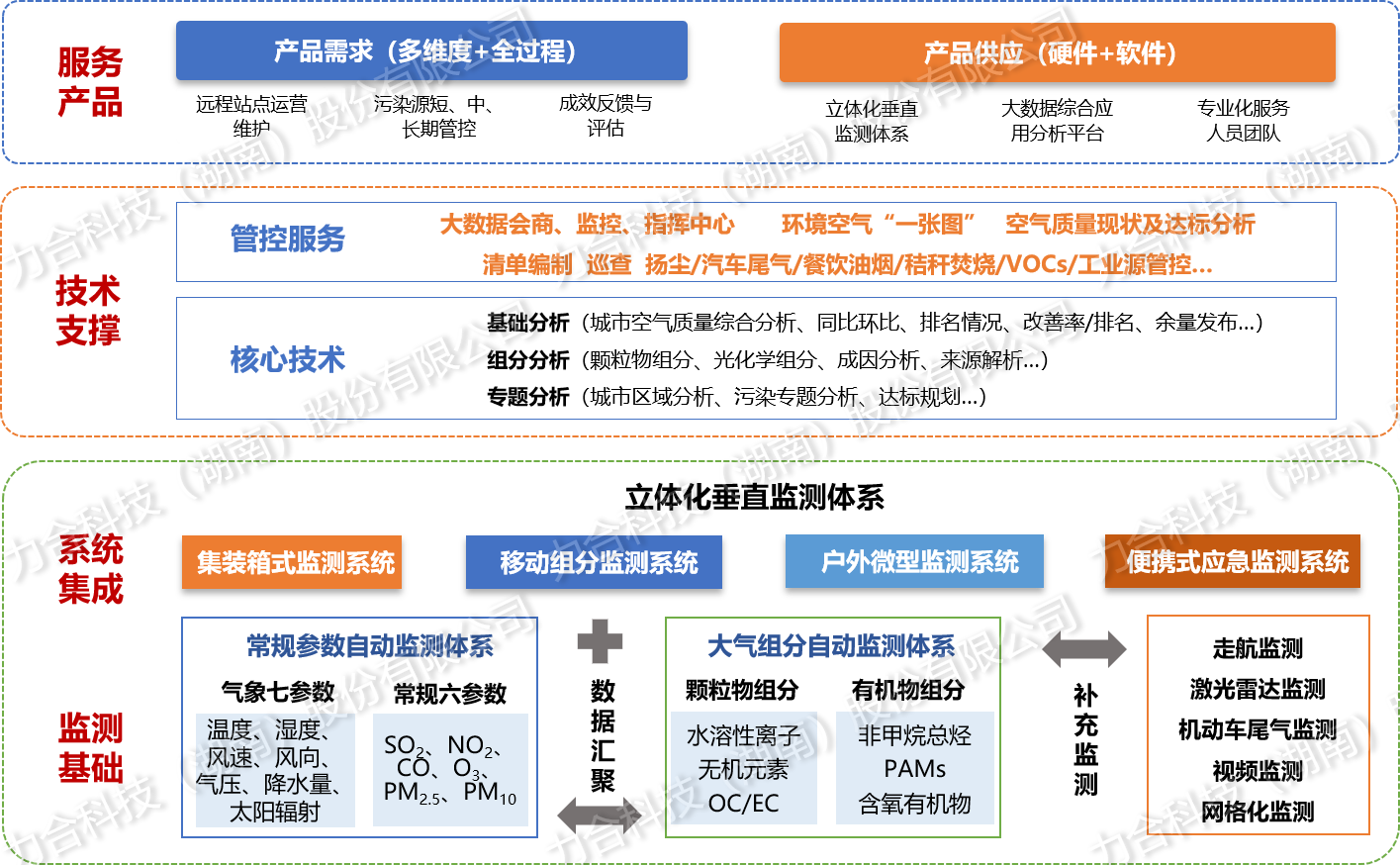
Urban Atmospheric Environment Management Service Solution
This solution is based on the research platform of the National Engineering Research Center of Technology and Equipment for Atmospheric Pollution and Greenhouse Gases Monitoring. It utilizes a series of automated atmospheric monitoring products, including conventional parameter monitoring, component monitoring, mobile monitoring, grid monitoring, and lidar monitoring, to establish a comprehensive three-dimensional "ground-air-space" monitoring system covering the entire process from pollution sources to ambient air. On this basis, a big data analysis platform provides technical support for urban atmospheric environment management services, driving continuous improvement in air quality.
This solution consists of four components: monitoring foundation, system integration, technical support, and service products. Leveraging the three-dimensional "ground-air-space" monitoring system, it collects real-time online monitoring data. Through the big data analysis platform, the solution offers consultation, monitoring, an environmental air map, air quality status and compliance analysis, inventory preparation, inspection services, and management solutions for key industries. It also provides feedback and evaluation of management effectiveness.

The solution is based on ambient air component monitoring and focuses on the coordinated reduction of O3 and PM2.5.
It integrates ground, air, and space monitoring systems to collect comprehensive data on urban air quality and pollutants.
It identifies pollution sources, quantifies contributions, and highlights targeted control measures.
It combines professional on-site staff with diversified control measures to ensure effective and localized implementation.
This system has been applied in many provinces and municipalities in China to monitor and improve urban air quality. For example, the air quality in Yiyang city has seen significant improvement. In 2019, Yiyang's PM2.5 concentration was 54 μg/m³, ranking last in the province. In 2020, the stationed technical service team from Lihe Technology used fixed monitoring, mobile monitoring, and VOCs mobile monitoring to conduct professional analysis and provide scientific guidance. By the end of 2020, Yiyang's PM2.5 concentration dropped to 43 μg/m³, a 20.3% year-on-year reduction, marking the highest improvement in the province and the 18th nationwide.

Related Instruments





